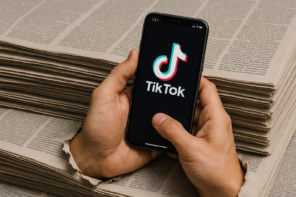
Monday July 5, 2021
A Gen-Z’s take on how to genuinely connect with them on social media
5-min read
Gen-Z. The Selfie Generation. iGen. There are many names for the age bracket of people born between 1996 and 2012. While Facebook and YouTube remain the dominant platforms used across generations, Instagram, Snapchat and TikTok enjoy particularly high usage among Gen-Z audiences. However, there is more to communicating with audiences in this generation than just being on the right platform. As the members of this generation enter the workforce and start forming a sizeable portion of brands’ consumer bases, it is important for organisations to hone their communication strategies to be reflective of Gen-Z’s needs. If you wish to understand how Gen-Z are more than just an extension of millennials, read on.
Meme, Meme on the Wall
As per Michele Knobel and Colin Lankshear in ‘Online Memes, Affinities and Cultural Productions’, memes can be defined as the rapid uptake and spread of a “particular idea presented as a written text, image, language or some other unit of cultural ‘stuff’.” Memes are often bizarre and absurd – the memes about the Evergreen ship that was stuck in the Suez Canal are prime examples – yet can also build upon the context of years of internet culture.
So while you may be tempted to take a meme template, add your organisation’s logo to it and label it as effective communication with Gen-Z, your efforts may fall flat. Memes are more than just a social media post – they are a communication phenomenon that Gen-Z uses to learn and share information about everything going on. This is why a clever marketing strategy will need more than just a meme template and your brand logo – it will also need an understanding of internet culture. Next time, rather than just grabbing the first viral meme to cross your feed, visit Know Your Meme, an archive of the history and spread of all popular memes.
Further, remember that while Gen-Z may immediately understand the significance of the meme in question, your other audiences may not. Memes as a tactic may alienate your Millennial and older audiences. You may be tempted to go for the next trending meme, but sometimes, a simpler and less complex communication phenomenon may deliver the same result. For example, in 2019, the President of Ukraine, Volodymyr Zelensky, started his presentation with a spoof video on how world leaders would interact with each other in a WhatsApp group.
The video was funny, understandable and relevant and is proof that sometimes, simpler formats of communication can appeal to a wider audience than the latest and most bizarre of memes.
Using the lingo
Often, brands – whose social media are obviously not managed by a younger Millennial or Gen-Z employee – fall into the trap of using what they think is the Gen-Z lingo. Brands can and should make themselves relatable and not take themselves too seriously on social media, but this should be done with care. If your communication style goes against the perception of your brand or if it appears like you are trying too hard, then you will end up appearing cringeworthy. You may also end up being featured on the Twitter account @BrandsSayingBae, which shows tweets from brands who were trying just too hard.
Even if you are doing a good job of communicating like a Gen-Z’er, your posts can still backfire because they did not take into account the wider context. The Twitter account of Chilling Adventures of Sabrina, a Netflix original series, did a great job of tweeting like Gen-Z would and making the account appear relatable. However, in January, they posted a tweet titled “Sunday Bloody Sunday,” which drew backlash from Irish social media users, who saw the post as insensitive as it referred to two dark moments of Irish history. The tweet was deleted shortly after and it was clear it was an unwitting mistake, but the instance serves as a reminder that brands should not always prize the delivery of the message over its contents.
Finally, Gen-Z tend to use a lot of self-deprecating humour and jokes about self-harm as a way to cope with the increasing uncertainty in their lives. This, combined with the heavy smartphone use, puts the generation at an increased risk of mental health issues. Brands can gain traction with Gen-Z if they use self-deprecating humour for their own products and services, but they should also take care to imbue the right amount of positivity as well in their posts. Memes need not be used simply as an expression of dark humour. Done right, they can strike the balance between irreverence and creating a positively-charged online community.
Managing your online community
While Gen-Z tend to be less idealistic and more forgiving than Millennials, they can also be more opinionated. They believe in using dialogue – whether online or in-person – for expressing their beliefs, developing their opinions and enacting change. This is why when the burger franchise Wendy’s – lauded for their sassy Twitter retorts – was perceived as donating to former US President Mr. Trump’s reelection campaign, Gen-Z (and Millennial) users were quick to start using social media to boycott Wendy’s.
The example of Wendy’s – and many other brands – proves that Gen-Z sees consumption of goods and serves as an expression of their identity, concerns and beliefs. They are vocal with their praise and their criticism. They are more diverse than the generations before them and will thus support brands that honour and respect this diversity. They are more concerned about issues such as economic inequality and climate change and will thus support brands that they perceive as tackling these issues. They are on track to being the best educated generation so far, thus they are constantly on the lookout for accurate and timely information.
The most important way for a brand to manage their online community would therefore be by establishing themselves as a source of reliable information. No brand can insulate itself from criticism, especially when social justice and sustainability have become increasingly complex. However, if you establish yourself as a brand that is embracing change and is constantly strengthening its commitment to its values, then you will find it easier to woo your Gen-Z audiences.
While these are good starting points for communicating with Gen-Z, remember that they are still generalisations. Listening to your audiences, studying their unique needs and adapting your communication strategies accordingly should remain your go-to strategy.
Curzon PR is a London-based PR firm working with clients globally. If you have any questions, please feel free to contact our Business Development Team bd@curzonpr.com







Follow us